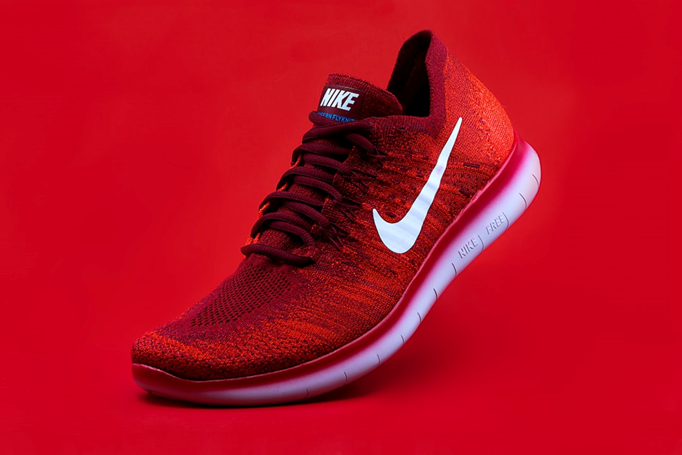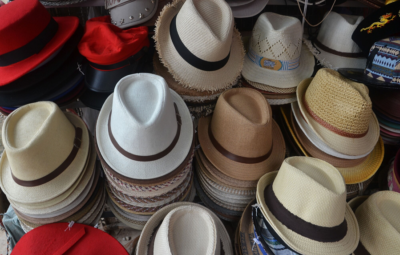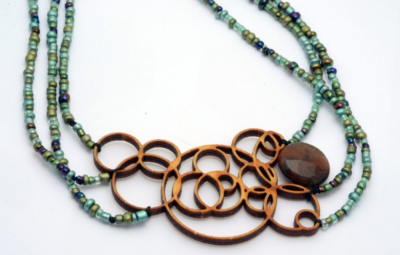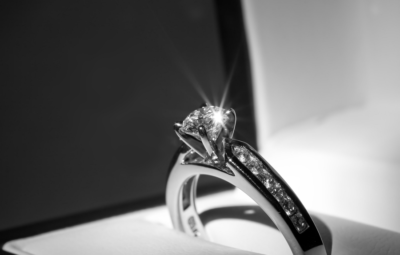Did you know that 60% of CrossFit athletes are women?
Many women love this sport because it builds muscle and burns fat in a fraction of the time of a regular gym workout.
But without the right Nike cross-training shoes, you risk serious injury and wasting all your hard work. And if you buy the first cross-training shoes you find on the shelf, you could end up in so much discomfort that you never wear them again.
Thankfully, choosing the right cross-training shoes is easy once you know your options and what to look for.
Ready to choose the perfect cross-training shoes for your fitness goals? Keep reading for everything you need to know!
Cross-Training Shoes vs Regular Running Shoes
From cardio to weightlifting, CrossFit combines many types of workouts. Because of this, you risk serious injury if you wear your regular running shoes.
The biggest difference between cross-training shoes and regular runners is the type of movement they’re built for. Regular running shoes are built for heel-to-toe movement. In other words, they’re built for forward motion.
Cross-training shoes are built for multi-directional movement. This includes forward movement, but also side-to-side movement. This is to support the varied directions your feet move in during a CrossFit workout.
These movements include:
- Cutting
- Stopping
- Breaking
- Jumping
- Quick direction changes
This is another reason why training shoes are great—they’re versatile and can often be used as your all-in-one gym shoe.
Running shoes also have a lot more shock absorption than cross-training shoes. This protects your ankles, knees, and hips when your feet are hitting hard against the sidewalk.
Because they offer more cushioning, running shoes have a higher heel drop. The heel drop is the difference in cushioning height from the heel of the shoe to the toe. Most running shoes have a heel drop of 10mm or higher.
Cross-training shoes tend to be flatter, offering a heel drop of 3-6mm.
This isn’t to say that cross-training shoes are uncomfortable!
What Types of Workouts Can You Use Cross-Training Shoes For?
Cross-training shoes are perfect for all the types of exercises you’ll be doing as part of your regular CrossFit regimen.
The cushioning of the shoes makes them perfect for high-impact training, while the heel support is perfect for weight lifting. The heel support of cross-training shoes is particularly important for movements involving squatting and then standing back up.
Since many cross-training shoes leave extra space at the forefoot, you can also do strength training exercises like push-ups.
Finally, cross-training shoes are also excellent for agility training exercises like lateral jumps and plank jacks. This is because the grooves in the outsoles of the shoes are specifically made to support plyometric movement.
While training shoes are excellent all-around shoes for most of your CrossFit and gym workouts, you don’t want to use them on runs longer than 5km (3.1 miles).
This is because training shoes don’t have the necessary shock absorption for longer distances, whether you’re using a treadmill or running outdoors.
How to Choose Nike Cross-Training Shoes
Now that you understand why it’s important to get shoes specific to cross-training, let’s dive into how to pick the right ones.
Since Nike has so many good-quality women’s shoes, it’s easy to think you only need to pick a style that’s labeled “training shoe.” But while all the shoes are good quality and stylish, there are a few vital considerations to consider so you can pick the right one for your purposes.
Finding the Right Fit
When you’re finding the right fit for your new cross-training shoes, think about the main activities you’ll be doing.
If you’re planning on doing HiiT training, you’ll be moving around a lot and will need shoes that can handle quick spurts. On the other hand, doing a lot of weight lifting (especially from the squatting position) requires shoes that help you stay balanced and firm.
You’ll want to aim for a shoe that has about 0.4″ of room in the toe box. This gives you enough space for jumping movements without causing your foot to slide around and unbalance you.
While 0.4″ is a good number for most people, remember to always keep your unique foot shape in mind. If your foot is wide or narrow, then make sure to check if these sizing options are available.
With Nike cross-training shoes, most models fit true to size. However, some shoes, like the Nike Metcon 7, tend to be quite narrow. This makes them a bad option for wider feet.
To find the best fit, go to a department store or a Nike store and ask them for women’s cross-training shoes. Try on as many styles as you can, and try to simulate your workout movements.
Trying shoes on in person is the best way to figure out which style and size work best for your needs. This also saves you time and shipping costs from always having to return ill-fitting shoes to online retailers.
Once you know your preferred size and style, write down your top three choices. This will help you search for good deals online or in-store during sales such as Black Friday.
Materials
One of the biggest differences you’ll notice with CrossFit shoes is that they have a very firm heel. This is what helps give you stability with heavy weight training and squats.
One of the most important materials to look out for is TPU (thermoplastic polyurethane). This plastic is very durable and compression-resistant. It’s also lightweight. You’ll often find this material on weightlifting shoes, and most CrossFit shoes have it as well.
You’ll also want to look out for EVA foam. This foam will be in the midsole of your shoe, and it’s important for cushioning your joints and letting you rebound after each step.
It also gives stability to your foot, which is vital during cross-training.
To test the foam on a shoe’s midsole, press it down with your finger. This will give you an idea of how the shoe will respond to your weight and pressure during your workout.
As for the shoe’s outsole, it should be firm rubber. For the outer construction of the shoe, you’ll want to go for materials that are breathable and won’t chafe against your foot while you exercise.
The most common outer materials include:
- Mesh
- Nike FlyKnit
- Nylon
- Cloth blend
- Textured rubber
- Dyneema fiber
You also want to keep durability in mind. While most cross-training shoes have several layers on their outer construction, you’ll need to pick the most durable material for the type of workout you’ll do.
So once you’ve narrowed down your shoe choice to three or four models, look into the materials on each. Research each material and see how suitable it is for your training regimen. For example, if you’re doing a lot of plyometric training, you’ll need a flexible and breathable upper.
Style
Nike shoes for women have some of the most fashionable styles out there, so you don’t need to worry about looking frumpy in them. You’ll likely be able to find a shoe that’s the perfect mix of style and function.
To make sure you get the most wear out of your shoe, pick one that matches your workout gear.
If you wear colorful, patterned, or neon workout clothes, your best bet is a black or white shoe. If you mostly wear black, tan, or other neutrals for your workouts, then neon shoes for women could be a great way to add a pop of color.
While comfort and utility are the most important, the shoes also need to suit your style and wardrobe. Otherwise, they’ll sit in your closet instead of your regular runners, which could cause you serious injury during CrossFit.
Climate
The last thing to consider is the climate where you live and whether you’ll be using your training shoes outside. While many people do CrossFit at the gym, some people join outdoor classes or work with a personal trainer.
Some people also use their training shoes for outdoor activities like rock or rope climbing. With these activities, you’ll need shoes that are very durable and won’t rip easily.
If you’ll be using your shoes in a hot climate, make sure to pick a pair that has breathable materials like mesh. You’ll want to avoid anything with plastic or rubber for the outer construction.
And if you’ll be working out in the rain, make sure to pick a shoe with good traction so you don’t slip.
The Best Nike Cross-Training Shoes
Now that you know what to look for in your training shoes, let’s go over some of the best women’s Nike shoes for your cross-training workouts.
While you want to look at online reviews for things like durability and comfort, you always want to keep your focus on the shoe that’s right for the workouts you’ll be doing most of the time.
Nike Metcon 6 Training Shoe
One of your best shoe choices is the Nike Metcon 6 Training shoe. Members of the CrossFit community love these shoes for the flexibility and durability they offer.
A hallmark of these shoes is the wide and stable heel, which is perfect for any exercises where you need to be in a squat or deadlift position. And while they offer extra support in the midfoot, these shoes give you flexibility and easy movement in the forefoot and the upper.
Nike Air Trainer 1
For women’s shoes with a classic twist, look no further than the Nike Air Trainer 1.
These women’s Nike Air Trainers are an updated version of the original cross-training shoe. This new design includes an even more comfortable fit and a cozy fit. Reviewers also love that the shoe stays comfortable, even during long periods of wear.
The shoe also features a midfoot strap to keep the shoe secure during your most explosive movements.
The Air Trainer 1s offer the retro look of collectible sneakers while giving you all the practical features you need in a CrossFit shoe.
Nike Free Metcon 3
These shoes are an excellent pick for women who want as much function as they do style. They’re also perfect if you enjoy the lightweight feel, support, and flexibility of other Nike Free models.
But while the shoes are lightweight, they still offer a wide and flat heel. This means that they’ll hold up during tough workouts and give you much-needed support.
For women who prefer monochrome shoes, the Metcon 3s come in a simple black and white colorway. The black upper and white sole and Nike swoosh offer a contrasting, eye-catching look that fits with the rest of your gym clothes.
If you prefer a pop of color, you’ll enjoy the Arctic Pink colorway. This unique color combination features black outer mesh, a pale pink back, an orange stripe, and a metallic copper swoosh.
Nike React Metcon Turbo
Finally, the Nike React Metcon Turbo is a great pick if you need a versatile workout shoe that can handle HiiT-style jumps as well as squats.
If you struggle with feeling comfortable in your CrossFit shoes, then you’ll also like this shoe. It offers more cushioning than the regular Metcon and is lighter. This cushioning makes it ideal for jumps and short sprints.
Since the shoe is more cushioned, it’s not as stable for exercises like heavy lifting and rope climbing. If these are the main workouts you do, you’ll want to opt for the regular Metcon model instead.
Ready to Choose the Perfect Nike Cross-Training Shoes?
Now that you know a little bit more about Nike cross-training shoes for women, it’s time to choose the perfect pair for your needs.
Remember to keep in mind the type of workouts you’ll be doing most often, as well as your personal style. With this guide and a little bit of research, you’ll be able to find the perfect Nike shoes to help you reach your fitness goals.
And for more fashion, shopping, and footwear guides, be sure to check out the rest of our site today!








